Characteristics and features of Russian porcelain
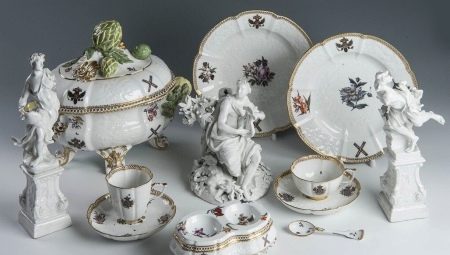
Today, in the age of the latest technologies, everything is changing, keeping up with the times, but Russian porcelain remains unchanged and will never go out of fashion, it is considered the best. Porcelain products are durable and can fulfill their purpose for decades. Small figurines will perfectly fit into any interior style. The dishes made from it are not only beautiful, but also have a wonderful history.

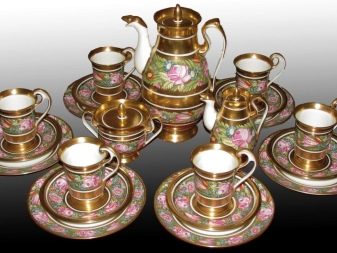
History of origin
There are many enterprises around the world that are engaged in the production of porcelain tableware. In the 18th century, such factories were located in Russia, the Baltic States and Little Russia, and they still produce exclusive products from porcelain and faience.
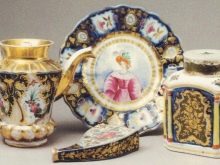


Today, only in Russia there are several dozen operating enterprises engaged in the manufacture of porcelain products. These include Gzhel plant, Dmitrovsky plant, Yuzhnouralsky plant, Imperial plant and many others. Of all the products produced, even original masterpieces are presented, which are exhibited at famous exhibitions, and, of course, all these factories produce common items.
Some of the represented factories originated from old manufactories: Kuznetsovsky porcelain, Popovsky porcelain, Imperial and famous Gzhel porcelain.
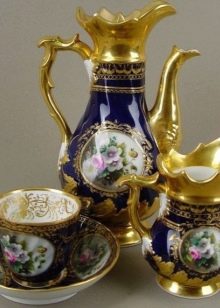

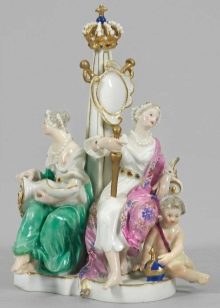
The whole story began with A.K. Grebenshchikov, it was he who opened the first manufactory in Moscow, engaged in the manufacture of products from faience, which had impressive dimensions, they were painted with paints. These products resembled majolica from China or Western Europe at that time. Grebenshchikov produced such products for the wealthy strata of society, but there was fake porcelain, it had a fine structure and a certain ringing.
Only shards of such dishes had a cream shade and were somewhat similar to fritted porcelain of foreign production. Today, products of that time are worth seeing in the Sergiev Posad Museum, and they are presented as old models of tableware of that time.
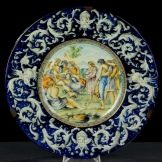
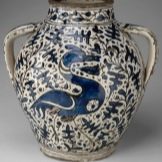

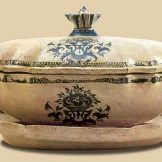
DI Vinogradov in 1748 develops real porcelain and takes Gzhel clays as a basis. And it is from this moment that the history of Russian porcelain begins. Gzhel production never belonged to one place, there were many subsidiaries that were engaged in the production of porcelain tableware for widespread use. In the 19th century, Gzhel masters invented opaque - it was considered a kind of faience, but already of high quality, and the dishes from it turned out to be thin.

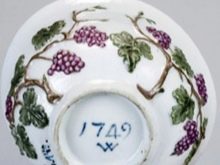

It is worth touching on the structure of earthenware and porcelain a little: they differ from each other in chemical composition, in the latter there is more kaolin. And it is this substance that makes the dishes thinner and more ringing, like crystal products. Earthenware has a thicker structure and craquelure on the surface, because the material absorbs water and deteriorates over time. Faience is a dense material, the sound is dull, in contrast to porcelain, which transmits light and sounds great.
Opaque is a thin material very similar to porcelain: it has the same water absorption, and thin pieces can be made from shards.


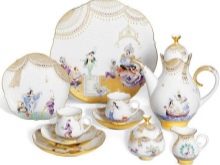
The first part of the history of Russian porcelain is shown in the following video.
Plants for the production of products
Porcelain, which Vinogradov invented, began to be produced at the Imperial Factory, it gained popularity and had its rivals - Mason and Sevres. Previously, all porcelain factories were either owned by the royal houses or became independent commercial enterprises. In all foreign countries, the production was funded by the royal families. And in Great Britain they were presented as a full-fledged commercial manufactory, and all ruling dynasties could only order products from this factory for themselves.
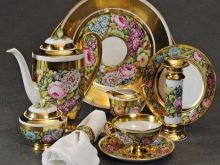
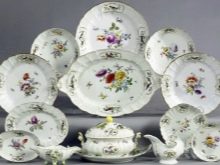
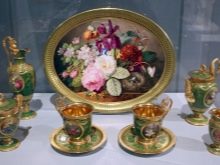
In Russia, everything was on an equal footing, that is, both had their advantages. And all of them could exist either for a short period of time, or they stood and produced products for centuries. But if the enterprise ceased to exist, then it merged with another plant or was completely closed. There are several enterprises that are independent productions - these are the factories of Gardner, Popov and Kuznetsov.
The Gardner factory operates at the expense of its previous owner; later it was taken over by the porcelain magnate Kuznetsov.
There is Kuznetsovsky porcelain, which is a brand in the same way as Imperial. Gardner's factory works in our time, only now it is called Verbiloka Porcelain.


The Dulevo porcelain factory is still operating today, it appeared in 1832 as Kuznetsov's heir, and he had already transferred the factory from Gzhel to Dulevo. It was this factory that was the main one in Russia for the production of porcelain, and Asian countries purchased its products.
In addition to porcelain items, the company was engaged in the production of various majolica products, garden sculptures, all kinds of appliances and flower pots. In the 2000s, the management changed at the manufactory, and the plant was gradually modernized. The shapes of products made from this product have remained unchanged, and even the decoration takes place according to the recipe of the last century.

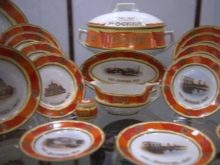
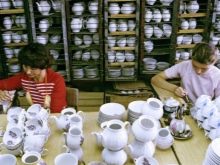
The Auerbach plant - now called Konakovsky - was also bought by Kuznetsov in 1870. It is still engaged in the production of dishes and interior items from earthenware material. There is another huge enterprise owned by the Kuznetsov family - a porcelain and earthenware factory in Rybinsk. This manufactory was founded in 1884 by the merchant P.A.Nikitin, but at first this factory produced red bricks, and over time they began to produce porcelain products there.
Today this plant has been renamed, it is called May Day. All manufactured dishes and Russian porcelain are supplied to Turkmenistan, Uzbekistan and Azerbaijan, the dishes have beautiful decor and are made according to a specific recipe. In general, Kuznetsov, as a creator, devoted a lot of time to discovering and checking the quality of manufactured products, trying to acquire only high-quality raw materials, even in spite of their cost. It was this tycoon who began to unite together all porcelain manufacturers, and later on glass manufacturers, thereby ousting foreign manufacturers from Russian markets.
In 1913, the tycoon Kuznetsov created his empire, which consisted of 18 factories producing various products. This particular manufacturer has received many awards and prizes at international exhibitions.

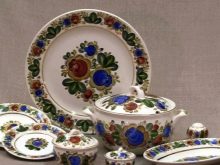

Apart from the Kuznetsovsky plant, there was also Popovsky, just as famous - this enterprise produced not only dishes, but also beautiful figurines, which are still exhibited in museums. Porcelain from the Popov factory had its own fine composition and could easily compete with other porcelain factories in Russia. This enterprise was ruled by the inventor of special paint A.G. Popov and his son D.A.Popov, their plant was located in the Moscow region, the dishes were produced for a wide range of users and, for the most part, for general catering establishments.
This enterprise opened its own laboratory for the production of paints for porcelain, it was the only one in Russia and had a rare color range. But the factory ceased to exist when its leaders died: the workers of the plant were all serfs and with the abolition of serfdom they fled. And the heiresses of this heritage were never able to cope with management, and the plant had to be closed in 1865.
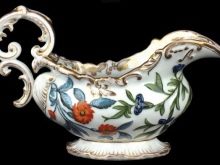

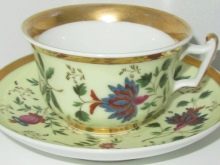
There is another porcelain factory, it was created by Prince Yusupov in 1818. All products from this enterprise were intended for noble persons, but it did not last long, since the owner died in 1831. This company had a certain secret: the prince personally created unique things, and this plant was not in a commercial race. And soon Prince Yusupov invited craftsmen from the Sevres enterprise Lambert, who worked only with high-quality materials and upon arrival already had his own individual collection of paintings and graphics.

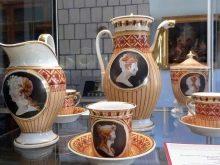

The history of the production of Russian porcelain is very rich in various events. There are many factories for production, some have long ceased to exist, and some still exist and enjoy a certain popularity. Today, many porcelain items have a unique engraving that is applied as heirlooms, such porcelain is very valuable. In museums, you can also find ancient porcelain, which was made in the past centuries.
Any Russian porcelain, be it a figurine or a service, will remain in vogue and even after a while will be a relic passed down from generation to generation.
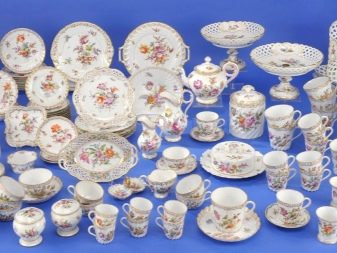
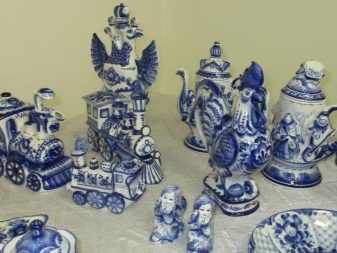
Next, see the continuation of the story about the history of Russian porcelain.








